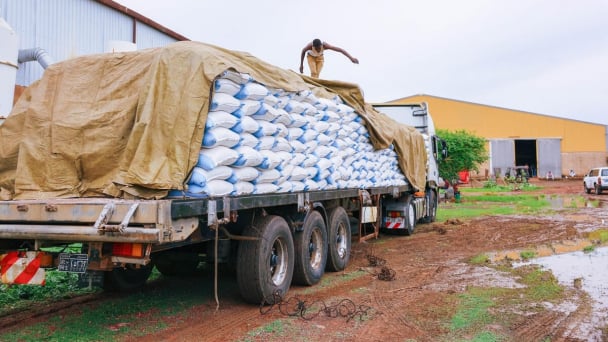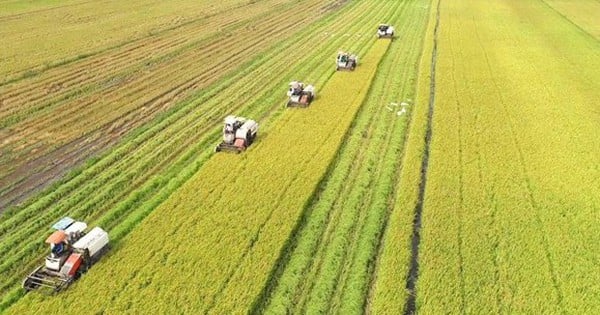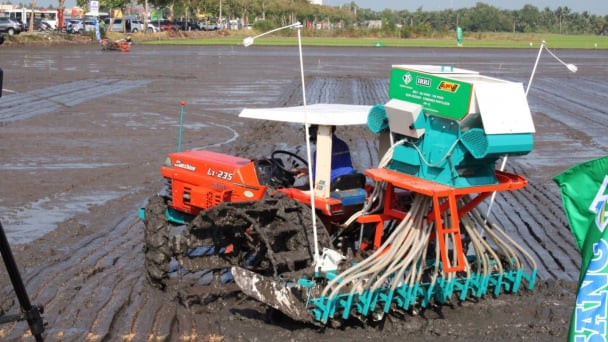May 21, 2025 | 11:41 GMT +7
May 21, 2025 | 11:41 GMT +7
Hotline: 0913.378.918
May 21, 2025 | 11:41 GMT +7
Hotline: 0913.378.918

A drone view shows Mark Tuttle's tractor and soybean planter parked on his soy farm in Somonauk, Illinois, U.S., May 30, 2024.
U.S. soybean export premiums are at their highest in 14 months, as grain merchants race to ship out a record-large U.S. harvest ahead of the U.S. presidential election and fears of renewed trade tensions with top importer China, traders and analysts said.
Nearly 2.5 million metric tons of U.S. soybeans were inspected for export last week, including almost 1.7 million tons bound for China, the most in a year, according to U.S. Department of Agriculture data released on Monday.
But while this export flurry is a bright spot for U.S. farmers coping with low prices and hefty supplies, sellers say such heightened export demand could be short lived — leaving the U.S. with a glut of oilseeds at a time when prices are hovering near four-year lows.
Tariff threats from presidential hopeful Donald Trump’s campaign speeches are prompting some Chinese importers to shun U.S. shipments from January onward, traders and analysts said.
Instead, these buyers are booking Brazilian soy—and paying up to 40 cents a bushel more than they would in the United States in an earlier-than-normal seasonal shift that’s shrinking the U.S. export window.
“The Chinese don’t know what final costs will be relative to tariffs. They are avoiding the United States from January forward,” said Dan Basse, president of AgResource Co.
Basse said he expects 2024/25 U.S. exports to fall 75 million bushels short of the latest USDA forecast.
How China will respond to tariffs under a new U.S. administration is unclear. Trump has vowed to boost tariffs on Chinese products to around 60%, while challenger Kamala Harris’ plan is to keep tariffs roughly as they are now.
“There’s a threat of tariffs from either party, but more so under a Trump administration,” said Terry Reilly, senior agricultural strategist with Marex. “With Harris, there’s a real possibility that things will revert to the status quo.”
Traders said premiums for immediate shipments of U.S. soy are likely to erode in the coming weeks as near-term demand is met and if trade war concerns limit new buying by China.
Cash premiums for soybean barges delivered to Gulf export terminals by midweek spiked to a 130-cent premium over Chicago Board of Trade November futures on Monday, reflecting strong demand for immediate supplies, traders said.
The same soybeans, if loaded next month, were available for 27 cents a bushel less, or a savings of roughly $14,000 per fully loaded 1,500-ton barge.
(Reuters)

(VAN) In 2024, over 295 million people across 53 countries and territories faced acute hunger—an increase of almost 14 million people compared to 2023, while the number of people facing catastrophic levels of hunger reached a record high.

(VAN) World Environment Day 2025 (June 5) carries the theme 'Beat Plastic Pollution' continuing to emphasize the global urgency of addressing the plastic waste crisis.

(VAN) This was the assessment shared by experts at the workshop titled 'Assessing the Role and Potential of Low-Emission Rice Production Systems in Vietnam,' held on the morning of May 19.

(VAN) Cai Rong Port is the fisheries control center of Quang Ninh, helping to monitor fishing vessels, combat IUU fishing, and remove the EC's 'yellow card'.

(VAN) The German Agricultural Society (DLG) explores the possibility of establishing a mechanization service center in Vietnam’s Mekong Delta to support farmers in accessing and utilizing advanced machinery.

(VAN) On May 16, the Department of Water Resources Management, in collaboration with the Food and Agriculture Organization of the United Nations (FAO), held a signing ceremony for the GEF-8 project document.

(VAN) Food safety, mechanization, vocational training, and market opening are key areas of cooperation expected between the Vietnamese Government and the Federal Republic of Germany.